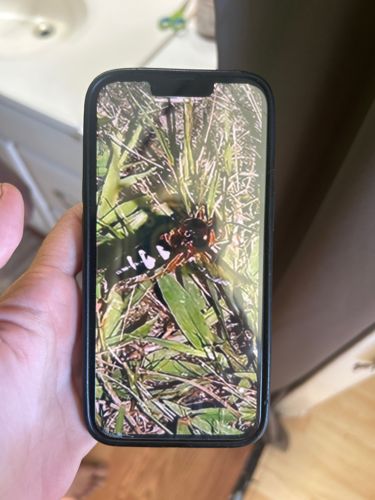Golden Silk Orb-weaver (likely species in genus Trichonephila or Nephila)
Scientific Name: Trichonephila (formerly Nephila), specific species identification is difficult from the image but common ones include Trichonephila clavipes (North America) or other regional species.
Order & Family: Order Araneae, Family Araneidae (or sometimes Nephilidae, a subgroup within Araneidae or considered a separate family)
Size: Female body length typically ranges from 2.5 to 5 cm (1 to 2 inches), with leg spans extending much larger, up to 10-15 cm (4-6 inches) or more. Males are significantly smaller, only a few millimeters in comparison.

Natural Habitat
Warm, humid climates, often found in forests, gardens, and near human habitation. They prefer areas with tall vegetation or structures to anchor their large webs, such as between trees, shrubs, or eaves of buildings.
Diet & Feeding
Primarily feed on flying insects such as flies, mosquitoes, butterflies, moths, and sometimes larger insects like beetles or even small birds caught in their strong webs. They inject venom to immobilize prey before wrapping them in silk.
Behavior Patterns
Golden silk orb-weavers are known for their impressive, strong webs, which can be several feet in diameter. They are typically stationary in their webs, waiting for prey. Females are much larger than males. They will often rebuild or repair their webs daily, especially after catching large prey or if the web is damaged. The silk has high tensile strength.
Risks & Benefits
Risks: Their bite is generally not considered dangerous to humans, but it can be painful and cause redness, swelling, and localized pain. Allergic reactions are rare but possible. Benefits: They are highly beneficial in controlling insect populations, including common pests like mosquitoes and flies, contributing to ecosystem balance as generalist predators.
Identified on: 8/10/2025